1 Main Application
1.1 Twistless Roving
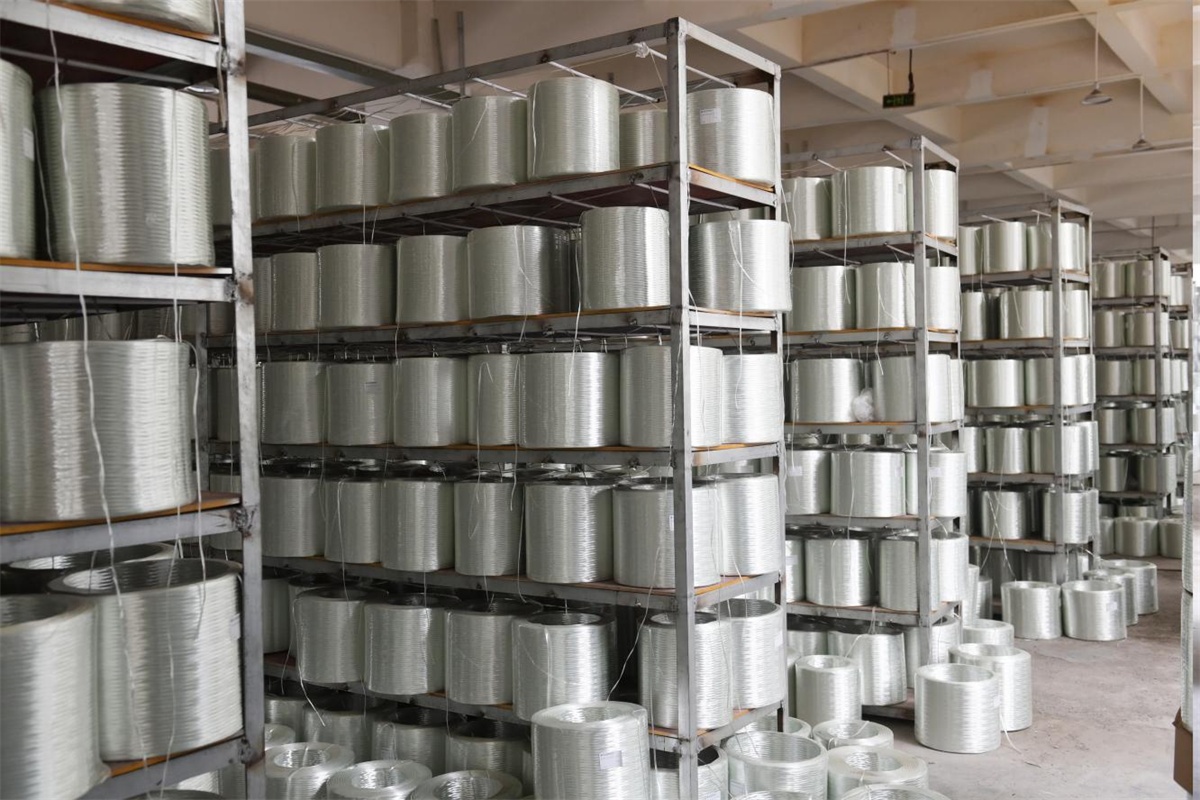
The untwisted roving that people come into contact with in daily life has a simple structure and is made up of parallel monofilaments gathered into bundles. Untwisted roving can be divided into two types: alkali-free and medium-alkali, which are mainly distinguished according to the difference of glass composition. In order to produce qualified glass rovings, the diameter of the glass fibers used should be between 12 and 23 μm. Due to its characteristics, it can be directly used in the forming of some composite materials, such as winding and pultrusion processes. And it can also be woven into roving fabrics, mainly because of its very uniform tension. In addition, the field of application of chopped roving is also very wide.
1.1.1 Twistless roving for jetting
In the FRP injection molding process, the twistless roving must have the following properties:
(1) Since continuous cutting is required in production, it is necessary to ensure that less static electricity is generated during cutting, which requires good cutting performance.
(2) After cutting, as much raw silk as possible is guaranteed to be produced, so the efficiency of silk forming is guaranteed to be high. The efficiency of dispersing the roving into strands after cutting is higher.
(3) After chopped, to ensure that the raw yarn can be fully covered on the mold, the raw yarn must have good film coating.
(4) Because it is required to be easy to roll flat to roll out the air bubbles, it is required to infiltrate the resin very quickly.
(5)Due to the different models of various spray guns, in order to suit different spray guns, ensure that the thickness of the raw wire is moderate.
1.1.2 Twistless Roving for SMC
SMC, also known as sheet molding compound, can be seen everywhere in life, such as the well-known auto parts, bathtubs and various seats that use SMC roving. In production, there are many requirements for the roving for SMC. It is necessary to ensure good choppiness, good antistatic properties, and less wool to ensure that the SMC sheet produced is qualified. For colored SMC, the requirements for roving are different, and it must be easy to penetrate into the resin with the pigment content. Usually, the common fiberglass SMC roving is 2400tex, and there are also a few cases where it is 4800tex.
1.1.3 Untwisted roving for winding
In order to make FRP pipes with different thicknesses, the storage tank winding method came into being. For the roving for winding, it must have the following characteristics.
(1) It must be easy to tape, usually in the shape of a flat tape.
(2) Since the general untwisted roving is prone to falling out of the loop when it is withdrawn from the bobbin, it must be ensured that its degradability is relatively good, and the resulting silk cannot be as messy as a bird’s nest.
(3) The tension cannot be suddenly large or small, and the phenomenon of overhang cannot occur.
(4) The linear density requirement for untwisted roving is to be uniform and less than the specified value.
(5) In order to ensure that it is easy to be wetted when passing through the resin tank, the permeability of the roving is required to be good.
1.1.4 Roving for pultrusion
The pultrusion process is widely used in the manufacture of various profiles with consistent cross-sections. The roving for pultrusion must ensure that its glass fiber content and unidirectional strength are at a high level. The roving for pultrusion used in production is a combination of multiple strands of raw silk, and some may also be direct rovings, both of which are possible. Its other performance requirements are similar to those of winding rovings.
1.1.5 Twistless Roving for Weaving
In daily life, we see gingham fabrics with different thicknesses or roving fabrics in the same direction, which are the embodiment of another important use of roving, which is used for weaving. The roving used is also called roving for weaving. Most of these fabrics are highlighted in hand lay-up FRP molding. For weaving rovings, the following requirements must be met:
(1) It is relatively wear-resistant.
(2) Easy to tape.
(3) Because it is mainly used for weaving, there must be a drying step before weaving.
(4) In terms of tension, it is mainly ensured that it cannot be suddenly large or small, and it must be kept uniform. And meet certain conditions in terms of overhang.
(5) Degradability is better.
(6) It is easy to be infiltrated by resin when passing through the resin tank, so the permeability must be good.
1.1.6 Twistless roving for preform
The so-called preform process, generally speaking, is pre-forming, and the product is obtained after appropriate steps. In production, we first chop the roving, and spray the chopped roving on the net, where the net must be a net with a predetermined shape. Then spray resin to shape. Finally, the shaped product is put into the mold, and the resin is injected and then hot-pressed to obtain the product. The performance requirements for preform rovings are similar to those for jet rovings.
1.2 Glass fiber roving fabric
There are many roving fabrics, and gingham is one of them. In the hand lay-up FRP process, gingham is widely used as the most important substrate. If you want to increase the strength of the gingham, then you need to change the warp and weft direction of the fabric, which can be turned into a unidirectional gingham. In order to ensure the quality of the checkered cloth, the following characteristics must be guaranteed.
(1) For the fabric, it is required to be flat as a whole, without bulges, the edges and corners should be straight, and there should be no dirty marks.
(2) The length, width, quality, weight and density of the fabric must meet certain standards.
(3) The glass fiber filaments must be rolled neatly.
(4) To be able to be quickly infiltrated by resin.
(5) The dryness and humidity of fabrics woven into various products must meet certain requirements.
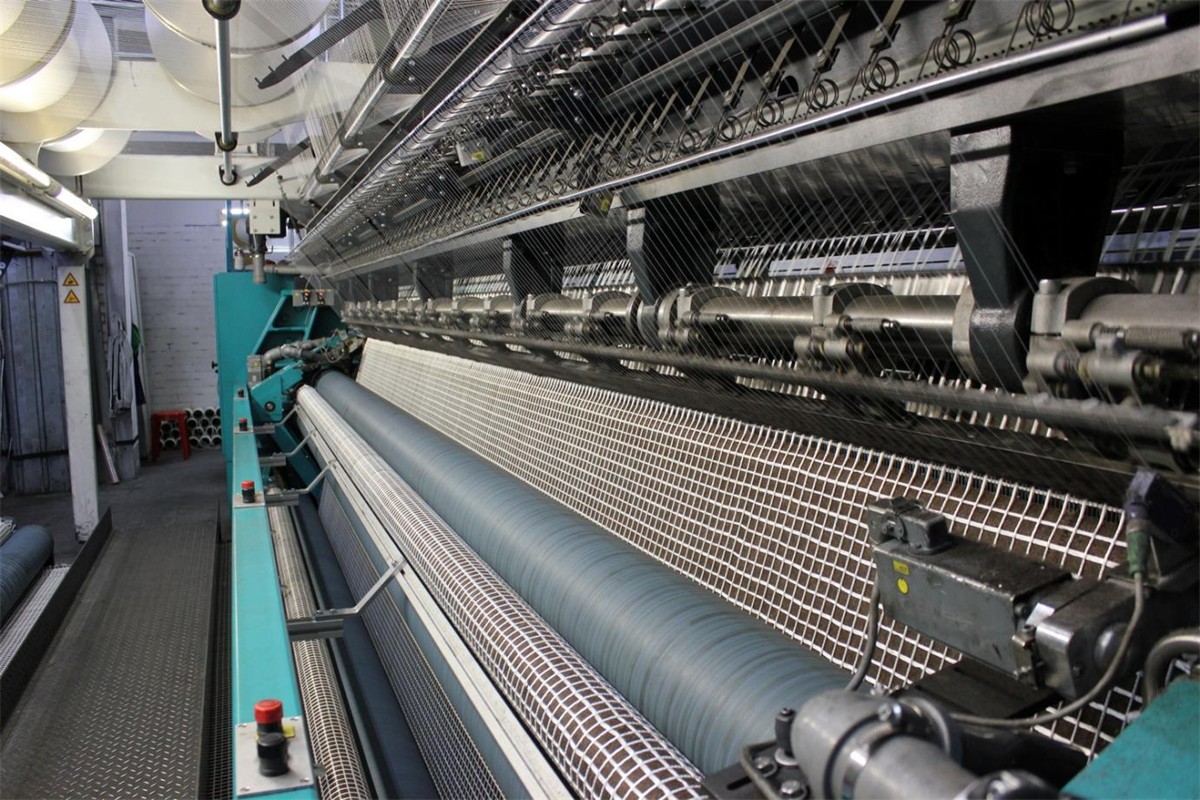
1.3 Glass fiber mat
1.3.1 Chopped strand mat
First chop the glass strands and sprinkle them on the prepared mesh belt. Then sprinkle the binder on it, heat it to melt, and then cool it to solidify, and the chopped strand mat is formed. Chopped strand fiber mats are used in the hand lay-up process and in the weaving of SMC membranes. In order to achieve the best use effect of the chopped strand mat, in production, the requirements for the chopped strand mat are as follows.
(1) The whole chopped strand mat is flat and even.
(2) The holes of the chopped strand mat are small and uniform in size
(4) Meet certain standards.
(5) It can be quickly saturated with resin.
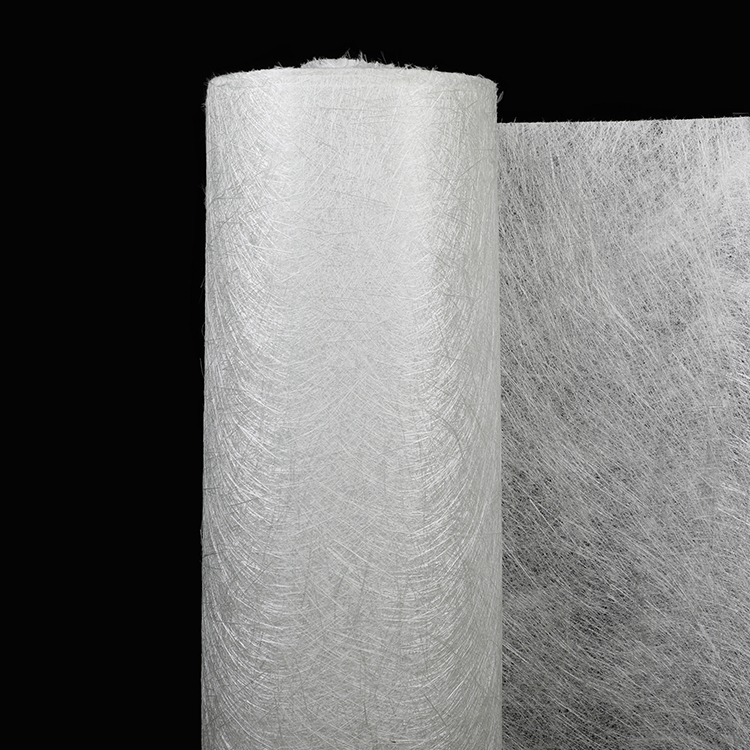
1.3.2 Continuous strand mat
The glass strands are laid flat on the mesh belt according to certain requirements. Generally, people stipulate that they should be laid flat in a figure of 8. Then sprinkle powder adhesive on top and heat to cure. Continuous strand mats are far superior to chopped strand mats in reinforcing the composite material, mainly because the glass fibers in the continuous strand mats are continuous. Because of its better enhancement effect, it has been used in various processes.
1.3.3 Surface Mat
The application of surface mat is also common in daily life, such as the resin layer of FRP products, which is medium alkali glass surface mat. Take FRP as an example, because its surface mat is made of medium alkali glass, it makes FRP chemically stable. At the same time, because the surface mat is very light and thin, it can absorb more resin, which can not only play a protective role but also play a beautiful role.
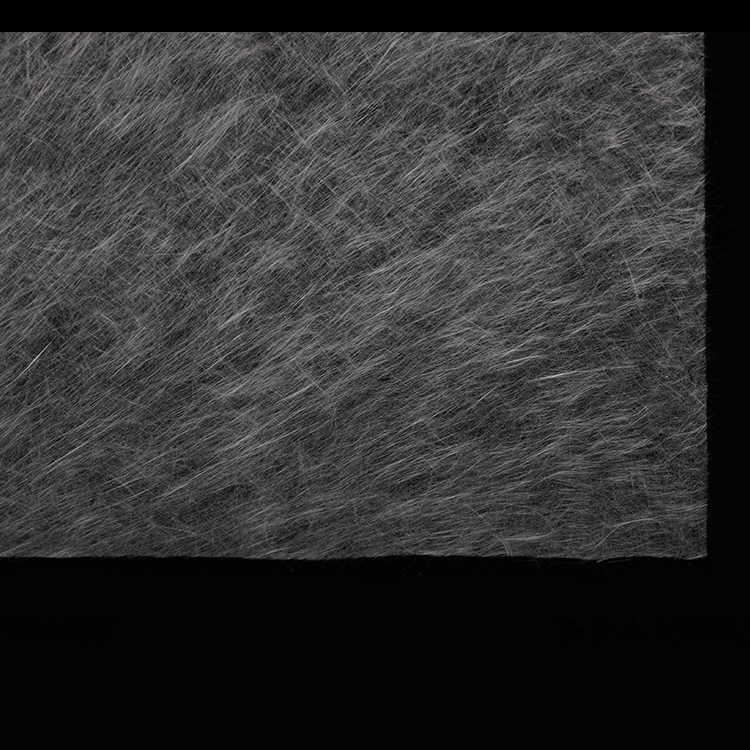
1.3.4 Needle mat
Needle mat is mainly divided into two categories, the first category is chopped fiber needle punching. The production process is relatively simple, first chop the glass fiber, the size is about 5 cm, randomly sprinkle it on the base material, then put the substrate on the conveyor belt, and then pierce the substrate with a crochet needle, due to the effect of the crochet needle, The fibers are pierced into the substrate and then provoked to form a three-dimensional structure. The selected substrate also has certain requirements and must have a fluffy feel. Needle mat products are widely used in sound insulation and thermal insulation materials based on their properties. Of course, it can also be used in FRP, but it has not been popularized because the obtained product has low strength and is prone to breakage. The other type is called continuous filament needle-punched mat, and the production process is also quite simple. First, the filament is randomly thrown on the mesh belt prepared in advance with a wire throwing device. Similarly, a crochet needle is taken for acupuncture to form a three-dimensional fiber structure. In glass fiber reinforced thermoplastics, continuous strand needle mats are well used.
The chopped glass fibers can be changed into two different shapes within a certain length range through the stitching action of the stitchbonding machine. The first is to become a chopped strand mat, which effectively replaces a binder-bonded chopped strand mat. The second is the long-fiber mat, which replaces the continuous strand mat. These two different forms have a common advantage. They do not use adhesives in the production process, avoiding pollution and waste, and satisfying people’s pursuit of saving resources and protecting the environment.
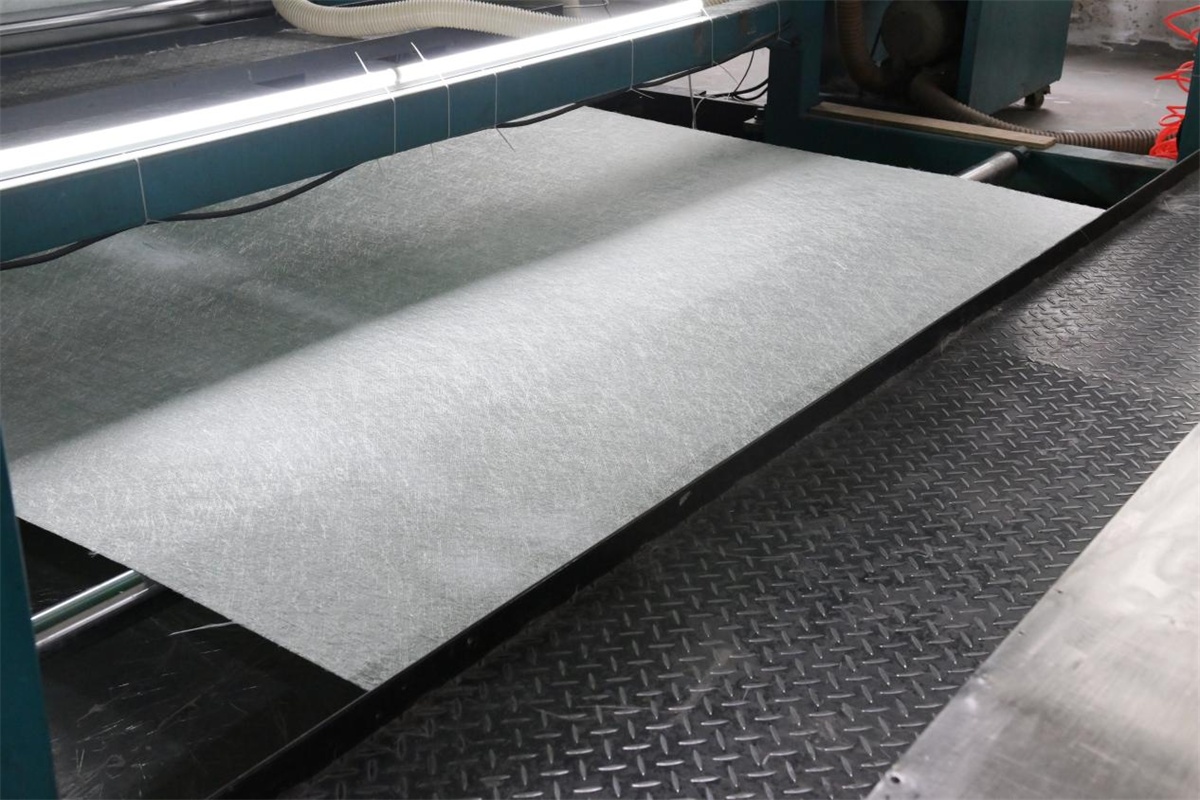
1.4 Milled fibers
The production process of ground fiber is very simple. Take a hammer mill or a ball mill and put chopped fibers into it. Grinding and grinding fibers also have many applications in production. In the reaction injection process, the milled fiber acts as a reinforcing material, and its performance is significantly better than that of other fibers. In order to avoid cracks and improve shrinkage in the manufacture of cast and moulded products, milled fibers can be used as fillers.
1.5 Fiberglass fabric
1.5.1 Glass cloth
It belongs to a kind of glass fiber fabric. The glass cloth produced in different places has different standards. In the field of glass cloth in my country, it is mainly divided into two types: alkali-free glass cloth and medium alkali glass cloth. The application of glass cloth can be said to be very extensive, and the body of the vehicle, the hull, the common storage tank, etc. can be seen in the figure of alkali-free glass cloth. For medium alkali glass cloth, its corrosion resistance is better, so it is widely used in the production of packaging and corrosion-resistant products. To judge the characteristics of glass fiber fabrics, it is mainly necessary to start from four aspects, the properties of the fiber itself, the structure of glass fiber yarn, the warp and weft direction and the fabric pattern. In the warp and weft direction, the density depends on the different structure of the yarn and the fabric pattern. The physical properties of the fabric depend on the warp and weft density and the structure of the glass fiber yarn.
1.5.2 Glass Ribbon
Glass ribbon is mainly divided into two categories, the first type is selvedge, the second type is non-woven selvedge, which is woven according to the pattern of plain weave. Glass ribbons can be used for electrical parts that require high dielectric properties. High strength electrical equipment parts.
1.5.3 Unidirectional fabric
Unidirectional fabrics in everyday life are woven from two yarns of different thicknesses, and the resulting fabrics have high strength in the main direction.
1.5.4 Three-dimensional fabric
The three-dimensional fabric is different from the structure of the plane fabric, it is three-dimensional, so its effect is better than the general plane fiber. The three-dimensional fiber-reinforced composite material has the advantages that other fiber-reinforced composite materials do not have. Because the fiber is three-dimensional, the overall effect is better, and the damage resistance becomes stronger. With the development of science and technology, the increasing demand for it in aerospace, automobiles and ships has made this technology more and more mature, and now it even occupies a place in the field of sports and medical equipment. Three-dimensional fabric types are mainly divided into five categories, and there are many shapes. It can be seen that the development space of three-dimensional fabrics is huge.
1.5.5 Shaped fabric
Shaped fabrics are used to reinforce composite materials, and their shape depends mainly on the shape of the object to be reinforced, and, in order to ensure compliance, must be woven on a dedicated machine. In production, we can make symmetrical or asymmetrical shapes with low limitations and good prospects
1.5.6 Grooved core fabric
The fabrication of the groove core fabric is also relatively simple. Two layers of fabrics are placed in parallel, and then they are connected by vertical vertical bars, and their cross-sectional areas are guaranteed to be regular triangles or rectangles.
1.5.7 Fiberglass stitched fabric
It is a very special fabric, people also call it knitted mat and woven mat, but it is not the fabric and mat as we know it in the usual sense. It is worth mentioning that there is a stitched fabric, which is not woven together by warp and weft, but is alternately overlapped by warp and weft. :
1.5.8 Fiberglass insulating sleeve
The production process is relatively simple. First, some glass fiber yarns are selected, and then they are woven into a tubular shape. Then, according to the different insulation grade requirements, the desired products are made by coating them with resin.
1.6 Glass fiber combination
With the rapid development of science and technology exhibitions, glass fiber technology has also made significant progress, and various glass fiber products have appeared from 1970 to the present. Generally there are the following:
(1) Chopped strand mat + untwisted roving + chopped strand mat
(2) Untwisted roving fabric + chopped strand mat
(3) Chopped strand mat + continuous strand mat + chopped strand mat
(4) Random roving + chopped original ratio mat
(5) Unidirectional carbon fiber + chopped strand mat or cloth
(6) Surface mat + chopped strands
(7) Glass cloth + glass thin rod or unidirectional roving + glass cloth
1.7 Glass fiber non-woven fabric
This technology was not first discovered in my country. The earliest technology was produced in Europe. Later, due to human migration, this technology was brought to the United States, South Korea and other countries. In order to promote the development of the glass fiber industry, my country has established several relatively large factories and invested heavily in the establishment of several high-level production lines. . In my country, glass fiber wet-laid mats are mostly divided into the following categories:
(1) Roofing mat plays a key role in improving the properties of asphalt membranes and colored asphalt shingles, making them more excellent.
(2) Pipe mat: Just like the name, this product is mainly used in pipelines. Because glass fiber is corrosion-resistant, it can well protect the pipeline from corrosion.
(3) The surface mat is mainly used on the surface of FRP products to protect it.
(4) The veneer mat is mostly used for walls and ceilings because it can effectively prevent the paint from cracking. It can make the walls more flat and need not be trimmed for many years.
(5) Floor mat is mainly used as a base material in PVC floors
(6) Carpet mat; as a base material in carpets.
(7) The copper clad laminate mat attached to the copper clad laminate can enhance its punching and drilling performance.
2 Specific applications of glass fiber
2.1 Reinforcing principle of glass fiber reinforced concrete
The principle of glass fiber reinforced concrete is very similar to that of glass fiber reinforced composite materials. First of all, adding glass fiber to the concrete, the glass fiber will bear the internal stress of the material, so as to delay or prevent the expansion of micro-cracks. During the formation of concrete cracks, the material acting as aggregate will prevent the occurrence of cracks. If the aggregate effect is good enough, the cracks will not be able to expand and penetrate. The role of glass fiber in concrete is aggregate, which can effectively prevent the generation and expansion of cracks. When the crack spreads to the vicinity of the glass fiber, the glass fiber will block the progress of the crack, thus forcing the crack to take a detour, and correspondingly, the expansion area of the crack will be increased, so the energy required for damage will also be increased.
2.2 Destruction mechanism of glass fiber reinforced concrete
Before the glass fiber reinforced concrete breaks, the tensile force it bears is mainly shared by the concrete and the glass fiber. During the cracking process, the stress will be transmitted from the concrete to the adjacent glass fiber. If the tensile force continues to increase, the glass fiber will It will be damaged, and the damage methods are mainly shear damage, tension damage, and pull-off damage.
2.2.1 Shear failure
The shear stress borne by the glass fiber reinforced concrete is shared by the glass fiber and the concrete, and the shear stress will be transmitted to the glass fiber through the concrete, so that the glass fiber structure will be damaged. However, glass fiber has its own advantages. It has a long length and a small shear resistance area, so the improvement of the shear resistance of glass fiber is weak.
2.2.2 Tension failure
When the tensile force of the glass fiber is greater than a certain level, the glass fiber will break. If the concrete cracks, the glass fiber will become too long due to tensile deformation, its lateral volume will shrink, and the tensile force will break more quickly.
2.2.3 Pull-off damage
Once the concrete breaks, the tensile force of the glass fiber will be greatly enhanced, and the tensile force will be greater than the force between the glass fiber and the concrete, so that the glass fiber will be damaged and then be pulled off.
2.3 Flexural properties of glass fiber reinforced concrete
When the reinforced concrete bears the load, its stress-strain curve will be divided into three different stages from a mechanical analysis, as shown in the figure. The first stage: elastic deformation occurs first until the initial crack occurs. The main feature of this stage is that the deformation increases linearly until point A, which represents the initial crack strength of glass fiber reinforced concrete. The second stage: once the concrete cracks, the load it bears will be transferred to the adjacent fibers to bear, and the bearing capacity is determined according to the glass fiber itself and the bonding force with the concrete. Point B is the ultimate flexural strength of glass fiber reinforced concrete. The third stage: reaching the ultimate strength, the glass fiber breaks or is pulled off, and the remaining fibers can still bear part of the load to ensure that brittle fracture will not occur.
Contact us :
Phone number:+8615823184699
Telephone number: +8602367853804
Email:marketing@frp-cqdj.com
Post time: Jul-06-2022







